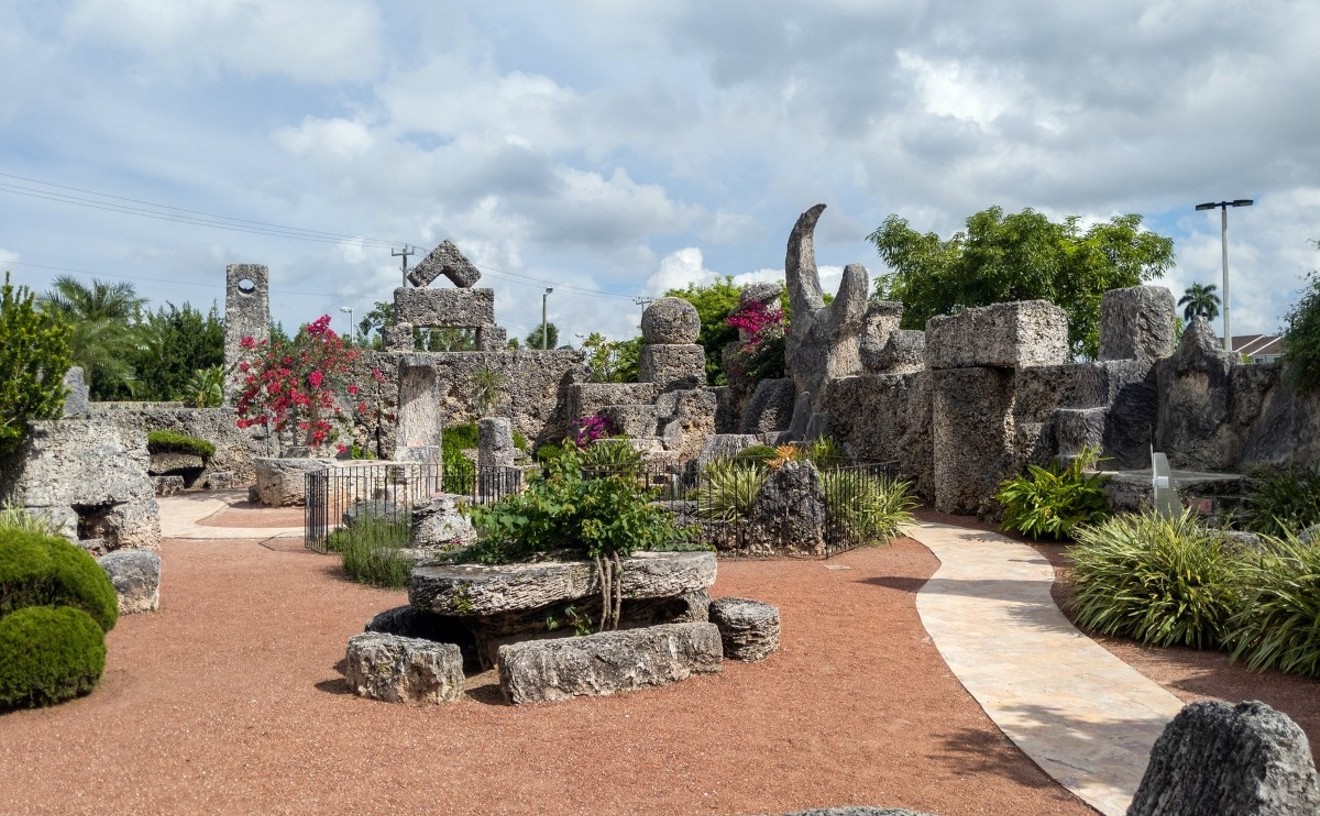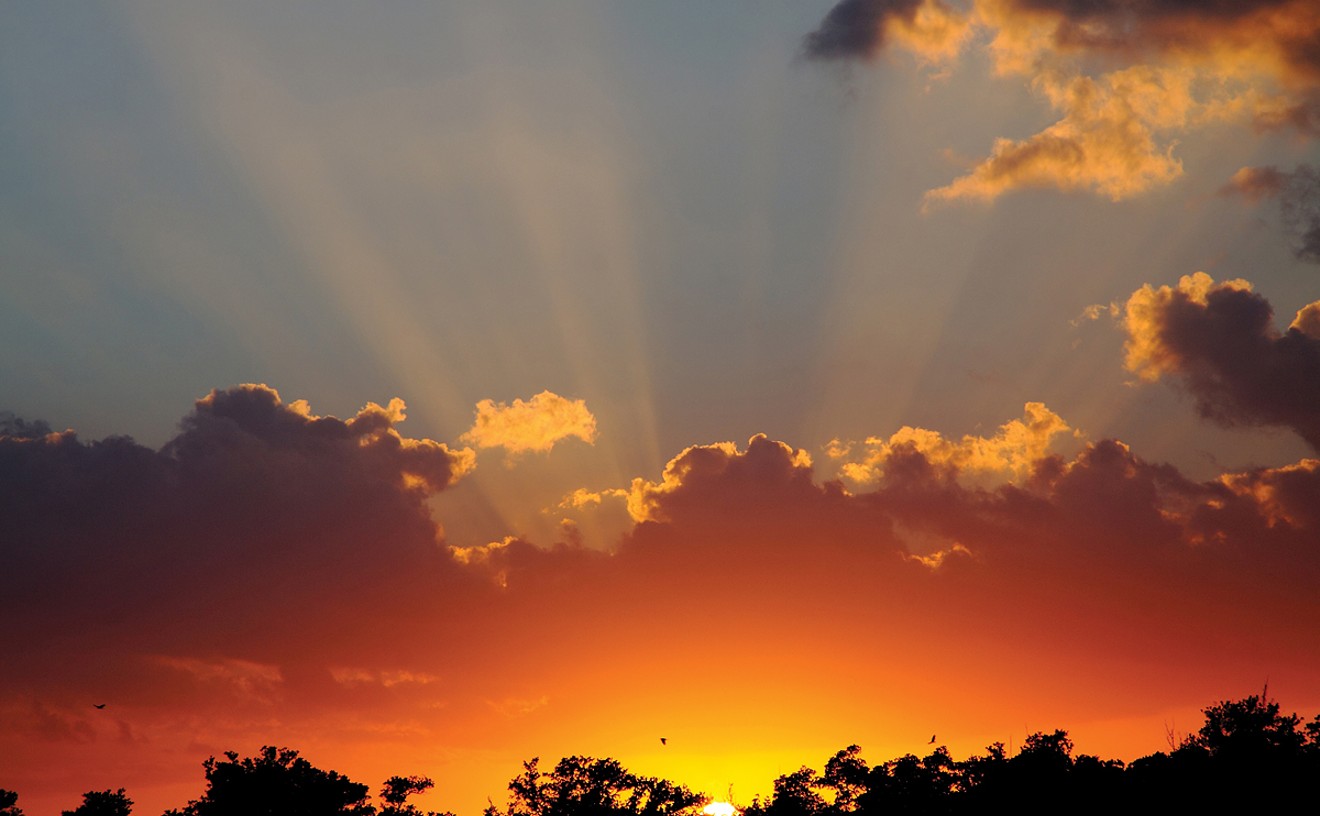Like to climb walls? Enjoy testing yourself and your body? How do you feel about trampolines and the NBC series American Ninja Warrior? If those questions tripped your need for adventure, there's a place for you. Opened in 2015, North Miami's Ninja Lounge includes 40,000 square feet of space — a full quarter of that covered by trampolines. About 20,000 people use it each month — and 5,000 to 8,000 on "a slow weekend," says marketing manager Jessica Albert. There are three basketball hoops, two dodgeball courts, and an elevated ropes course. The main attraction is the ninja warrior obstacle course, a replica of the consistent features of the course used in the Ninja series. (It is also the only gym in South Florida certified by the show.) The place costs from $10 to $54.50 per hour, and monthly memberships start at $49 per month. There are also creative fitness classes, including ninja warrior boot camp, ballroom dancing, and hip-hop. "We get a lot of people training for the show," says Albert, who lists athletes such as former Yankees catcher Jorge Posada and NBA star Dennis Rodman among clients. "There's even a diner where you can eat after you work out," she says.
Best Escape From Reality
Ninja Lounge
- 14401 NE 19th Ave., North Miami, 33181 Map
- 786-590-5000
- ninjalounge.com
Best Reason to Stay in Miami for the Summer
Venetian Pool

When summer temps threaten to hit triple digits, there's one place in Miami that stays a consistent 76 to 78 degrees: the historic Venetian Pool in Coral Gables. Fed by a natural spring and drained nightly, the 820,000-gallon pool built in 1923 is ideal for a midday soak if your backyard is waterless or you find yourself terrorized by obnoxious drunks when you venture downstairs to your apartment's pool. This isn't just any neighborhood pool, either — with waterfalls, rock features, and faux Mediterranean ambiance, it's the only swimming hole in America on the National Register of Historic Places. For $13 for adults and $8 for kids (with extra discounts for Coral Gables residents), you'll get the most bang for your buck if you get there early and make a day of it. Bring your own snacks to avoid the lines at the concession stand, and put the money toward a chair rental so you'll have a place to sprawl out and stash your sunscreen. Take one last dip before the pool closes (around 4:30 to 6:30, depending upon the day and time of year) and ride home with the windows down so you can feel the hot wind against your wet hair. And if even that fails to shake your stubborn summertime blues, you have full permission to pull into the nearest parking lot and rock back and forth in the air conditioning.
- 2701 De Soto Blvd., Coral Gables, 33134 Map
- 305-460-5306
- venetianpool.com
Best Place to Take Out-of-Towners
Coral Castle Museum

Sure, you can take your non-Miami friends club-hopping in South Beach or exploring the artsy streets of Wynwood, but let's face it — that's so cliché. Though the 305 takes pride in its hard-core party rep and burgeoning arts scene, to really give out-of-towners a taste of the area, you have to show them the weird side. And Coral Castle Museum is the epitome of all things strange in these parts. Constructed by Edward Leedskalnin — a five-foot-tall, 100-pound Latvian man with a fourth-grade education — using nothing but his bare hands and simple tools, the coral-rock fortress is rumored to have been built as a tribute to Leedskalnin's love, Agnes Scuffs, whom he referred to as his "Sweet Sixteen" because she was 16 years old, a full decade younger than he was. Leedskalnin and Scuffs had planned to get married, but she called it off the eve of their wedding. With a broken heart and crushed spirit, Leedskalnin left Latvia. He lived in Canada, California, and Texas for some time but, after developing tuberculosis, ended up in Florida in 1918. He had begun construction of the castle in Florida City in 1923, a few miles south of its current location. But after hearing of a ten-acre site for sale, he moved to Homestead in 1936 and took the colossal stone pieces with him. It is said to have taken Leedskalnin three years to move the rocks. Construction at the current site began in 1936 and was completed in 1951, the year Leedskalnin died. However, no one really knows how he erected the castle. Some people say aliens helped, while others contend the whole backstory is a sham. He swore he "knew the laws of weight and leverage well," which is how he precariously balanced multi-ton rocks atop one another. Regardless of how Coral Castle was built, your out-of-town buddies will definitely have one hell of a story to tell back home.
Readers' choice:
- 28655 S. Dixie Highway, Homestead, 33033 Map
- 305-248-6345
- coralcastle.com
Best Not-So-Cheap Thrill
TourHelicopter.com's Sunset Tour of Miami Beach
There's a better way to see Miami than from a traffic jam on I-95 in your Ford Focus. A sunset helicopter tour will set you back about 200 bones per head, but it's the fastest and prettiest way to see Miami Beach and the surrounding area. TourHelicopter.com's choppers can fit up to six guests, but you need at least two to book a flight, so bring a favorite long-distance friend in town or that impossible-to-please love interest you have yet to wow. If you call ahead and time it right, you can catch the last bit of sunset and then transition into a nighttime tour of the city's lights as you head back on the half-hour excursion (which is also by far the dopest way to check out Christmas lights if you book around the holidays). If you're celebrating, and why wouldn't you be, it's A-OK to bring a bottle of champagne or your beverage of choice. But keep it classy — you're on a helicopter, not a frat party bus.
- 603 SW 77th Way, Pembroke Pines, 33023 Map
- 954-639-4010
- tourhelicopter.com
Best Place to Go Stoned
Simpson Park Hammock
There's nothing better after you've smoked a tree than to be surrounded by them. West of Brickell, a soft mist lingers above the Roads. Just below sits one of Miami's best-kept secrets: Simpson Park Hammock. The Garden Center's coral-lined cottage entrance gives way to a true urban oasis, where a winding nature trail's seashell-lined path offers a blissful reprieve from the traffic roaring just a block away. There's silence — nothing but verdant humidity and rustling leaves. Miami's blue sky is engulfed by trees. In the distance, a family of raccoons rushes into red stopper bushes, shrouding the speeding Metrorail. Even sober, the place is magical.
- 5 SW 17th Rd., Miami, 33129 Map
- 305-859-2867
- miamigov.com/parks/simpson.html
Best Picnic Spot
Matheson Hammock Park

Sometimes all you need is a blanket, a leafy tree casting some delicious shade, and a few minutes to contemplate life's great mysteries while munching on a bologna-and-cheese sandwich. That may sound like a simple enough demand, but with all the sweating crowds, echoing traffic, and endless uhntz-uhntz madness that defines Miami, finding some peace and quiet in the Magic City can be a daunting task. But there's a lush green oasis right in the middle of it all. In fact, it's the first county park in the 305: Matheson Hammock. In 1930, industrialist William J. Matheson handed 85 acres of tropical hammock to the county and asked it to create a botanical garden. Four years later, the county bought a huge adjacent stretch of land to create more than 500 acres of oasis on the waterfront. Today you can find all of your picnic essentials, from massive banyan trees to pavilions and the occasional squirrel. There's even a manmade atoll pool that empties and fills with the tides. There's plenty of grass to pitch a picnic lunch, but there's also a sandy beach with views of the downtown Miami skyline.
- 9610 Old Cutler Rd., Coral Gables, 33156 Map
- 305-665-5475
- miamidade.gov/parks/matheson-hammock.asp
Best Park
Morningside Park
Just south of the trendy Upper Eastside, where Russian billionaires are plotting the next wave of luxury condo towers, an older Miami holds out. Banyans line the streets of the historic Morningside neighborhood, where snow-white ibises roam freely, heading east toward the spot where Miami's best-rounded park hides nestled along the bayfront. This is not a cleverly designed concert venue or a hole-in-the-wall pop-up park. Morningside is a space conscious of its natural surroundings. On weekends, families barbecue near loved ones renting kayaks and paddleboards. Basketball courts and soccer fields brim with bustling, sweating players. But for those slow Thursday mornings, there's also a quiet bench and a sunrise waiting over Biscayne Bay.
Readers' choice:
- 750 NE 55th Terrace, Miami, 33137 Map
- 305-795-1834
- miamigov.com/parks/park_morningside.html
Best Dog Park
Hobie Island Beach Park
Dog parks can be stressful for humans. You want to let your dog explore freely, meet new friends, and romp around. But how do you know if the other dogs there have been trained properly? What if they have fleas or aggression issues? These are the neuroses of a dog owner with severe attachment anxiety. But there's a place in Miami that can help — for a lot less money than the therapist's couch you probably need. Just over the Rickenbacker Causeway, next to the graffiti-covered Miami Marine Stadium, sits Hobie Island Beach. Cubans call it "Los Espinitos" because the beach is filled with mangroves popping up along the sand. It's not an ideal beach for people, but for dogs, it's a natural playground of adventure. Some dogs are afraid of water, flailing their paws as they try to walk across the swampy expanse. Others are natural-born swimmers. With the wind in their fur, dogs paddle across the shallow shoreline, discovering a new world — much to their relaxed owners' delight.
Best Public Restroom
Village Green Park
It's fair to enter most public restrooms, like all Keanu Reeves movies, with very low expectations. The vast majority are barely a notch above popping a squat on the roadside as honking motorists speed past and laugh. But if most public restrooms are the 47 Ronin-era Keanu bombs, the toilets at Village Green Park are Point Break. Perched in the emerald heart of the tony Village of Key Biscayne, this pit stop feels like an oasis you should pay for the privilege of visiting. Inside, the air conditioning cools, while soft lighting, floor to ceiling stall doors, and a fully stocked supply of toilet paper all whisper, "Serenity now." Walk in to this public restroom and you'll imagine Keanu himself saying it Matrix-style: "Whoa."
Readers' choice:
- 400 Crandon Blvd., Key Biscayne, 33149 Map
- keybiscayne.fl.gov/index.php?submenu=_play_fields&src=gendocs&ref=ParksPlaygroundsPlayingFields&category=Parks%26Rec
The Underline is an ambitious plan to convert the path beneath the Metrorail into a ten-mile linear urban trail, designed by top architects and urban landscapers to be Miami's answer to New York's now-iconic High Line. But anyone who has run on the curvy trail today knows it's already great. The Metrorail's tall infrastructure casts a cooling shadow on the trail, and whizzing trains send a steady breeze down while your feet hit the pavement. Sea grape leaves and rock doves line the path beside you. And for now — before the starchitects and the glowing national media move in — it's a relatively seldom-used trail, making it perfect for a late-afternoon jog. Traffic rests at a stand-still along South Dixie Highway, but you're flying by. From Coconut Grove Station on SW 27th Avenue north to Brickell Station, it's a three-mile jog. And on your way back, you can treat yourself to a cafecito or craft beer from El Carajo — or simply take Metrorail back if it's that kind of day.





